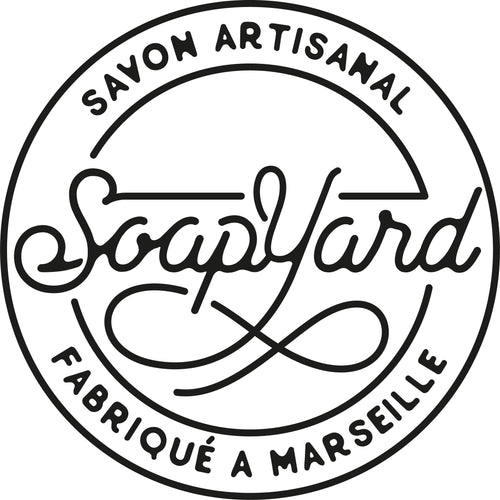Healthy happy animals for healthy milk!

Camel milk from European farms used in SoapYard dairy soaps is from happy camels fed on a rich, and nutritious diet of pasture grass.
Camel milk is considered a rare milk and can be hard to source. it's an expensive milk compared to cow's milk, but despite this it's fast becoming the next new super-ingredient with claims that it has extraordinary benefits when consumed and used topically. Camel milk tastes very similar to cows milk, but in fact their properties are quite different.
When used in soap or beauty products, the benefits may be less defined compared to regularly drinking camel's milk, but certainly many people claim that is has helped with skin disorders such as dry skin, acne, fine lines and ageing, blemishes and eczema.
Importantly people report that it makes their skin feel good and it isn't drying like some soaps. It contains a small amount of lanolin which is a good for most users, but some people who are allergic to lanolin should avoid it.
Camel milk contains several Alpha Hydroxy Acids (AHAs) as well as vitamins, minerals, and anti-aging, anti-inflammatory immune proteins. The AHA’s gently exfoliate the skin and stimulate cell regeneration. AHA’S have a very small molecular structure that is able to pass through skin and also stimulate collagen production.
It contains essential fatty acids such as Omega oils 3, 6 & 9 which keep the skin moisturised. It does not ‘strip’ your skin of natural oils like harsh chemical skin products and can balance the skin’s pH and support the skin’s natural oils.
Camel milk has a unique milk structure that may penetrate the top layer of the skin - the epidermis - and reach the vascular dermis, which thus stimulates cell regeneration, collagen and elastin production and promotes healing within the skin’s lower dermal layers.
It contains substantial amounts of Vitamin A, B, C, D and E which occur naturally in the milk and provide anti-oxidant, anti-aging and restorative properties which may protect skin cells against every day oxidative stress.

FUN FACTS:
Camels are intelligent animals and have a good memory. They are usually friendly and sociable animals and don't generally tolerate unfriendly behaviour or cruelty and will respond negatively to both. If a camel is being friendly towards it's keepers, it's fair to assume that the people looking after it are generally kind to their animals.
Camel milk is closer to human milk than other types of milk. It tastes similar to cows milk, but has a slightly salty taste. It's described as light, creamy, refreshing and substantial. The camel's diet will affect the taste of the milk but most on European farms are pasture fed and so eat grass.
Camel milk is better for the environment than cows milk because camels survive with relatively little water and plants as food, as a result they need much less grazing area and can produce milk with lower environmental impact than cows.
Lower Lactose: Camel Milk contains less Lactose than cows milk. Several studies have been conducted which have found that camel milk is more easily digestible than cow's milk. This is because camel milk does not contain the molecules A1 Casein and Lactoglobulin. Apart from lactose, these are the molecules responsible for making milk harder to digest.
Camel milk has smaller fat molecules which means that it’s simpler to break down than cow's milk and does not require homogenisation. Homogenisation is the process through which the liquid portion of milk and the fat are blended. During this process the milk gets oxidised which creates free radicals. Free radicals are by-products of oxidisation which are toxic to tissues and cells. Camel milk does not need to undergo homogenisation and therefore makes it free of toxic by-products, unlike cow's milk.
Camel Milk is rich in nutrients and contains high levels of Potassium, Magnesium, Iron, Vitamin C, Copper, Manganese, Zinc and Protein and is a natural source of skin-softening AHA's alpha-hydroxy acids.
Camel milk is much more expensive than cows milk, especially in Europe and it's still considered a 'rare milk'. There are very few camel farms in Europe and they are small, family run dairies. Camel farms in Europe are not industrialised in the same way that cow farms have been, and they don't have extensive modern breeding programmes like the Middle East. The ratio of camels to cows in Europe is 1:12,000. That's one camel for every 12,000 cows!
Camel pregnancies last longer than other dairy animals which makes production for farmers slower and less commercial
A Camel's gestation period is between 377 and 402 days compared to: Donkeys 360-375 days, Cows 283 days, Buffalo 283 days, Sheep 152 days and Goats 150 days,
There is some evidence which appears to show that camel's milk may have the following health benefits, though research is ongoing.
Diabetes: Camel milk has characteristics similar to insulin
It may strengthen the immune system: it's rich in immunoglobins which are powerful substances which stimulate the immune system
It may decrease allergic reactions
It's very similar to human breast milk and may be a natural replacement
Is may protect against certain autoimmune diseases
It may improve Autism Spectrum Disorders ASD Nature.comVery Some researchers have stated that camel milk may inhibit the tumour and malignant cells of a number of cancers
Camels have a long history in Europe. Arabian camels with one hump were used by the Ancient Romans and archeological evidence has found they were used in Belgium during the Roman period. The Mongols briefly introduced them to Eastern Europe, and the Moors introduced them to the Spanish Canary Islands. Grand Duke Ferdinand brought them from North Africa in 1662 and used them for labour on his extensive farms. There were still several hundred in Tuscany right up to the 19thC!
We've taken some of our information from the following sources:
Desert Farms
Kamelenmelkerij Smits
EatPrayWork
DrChristianson

